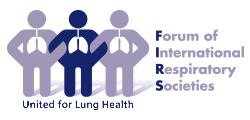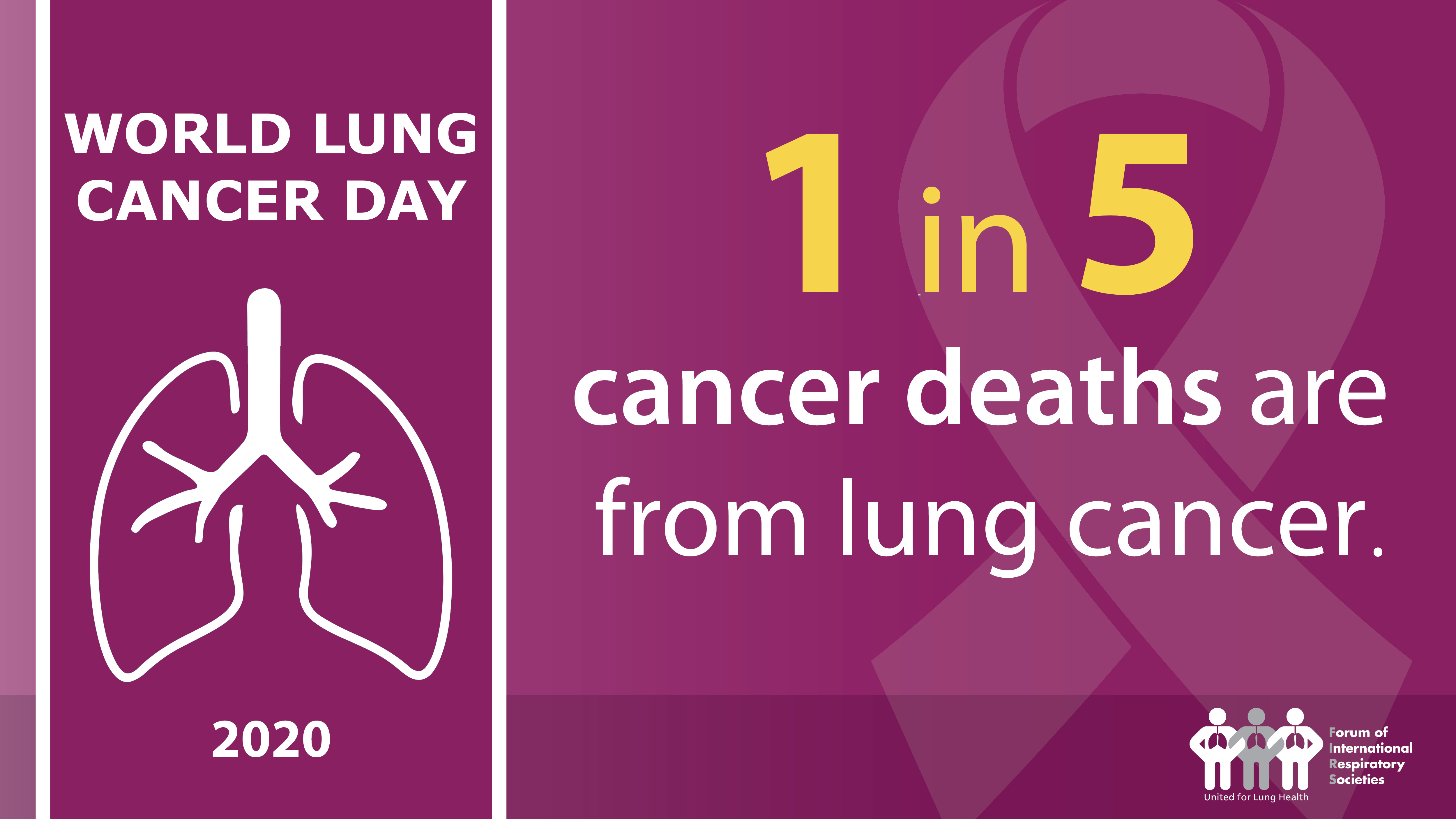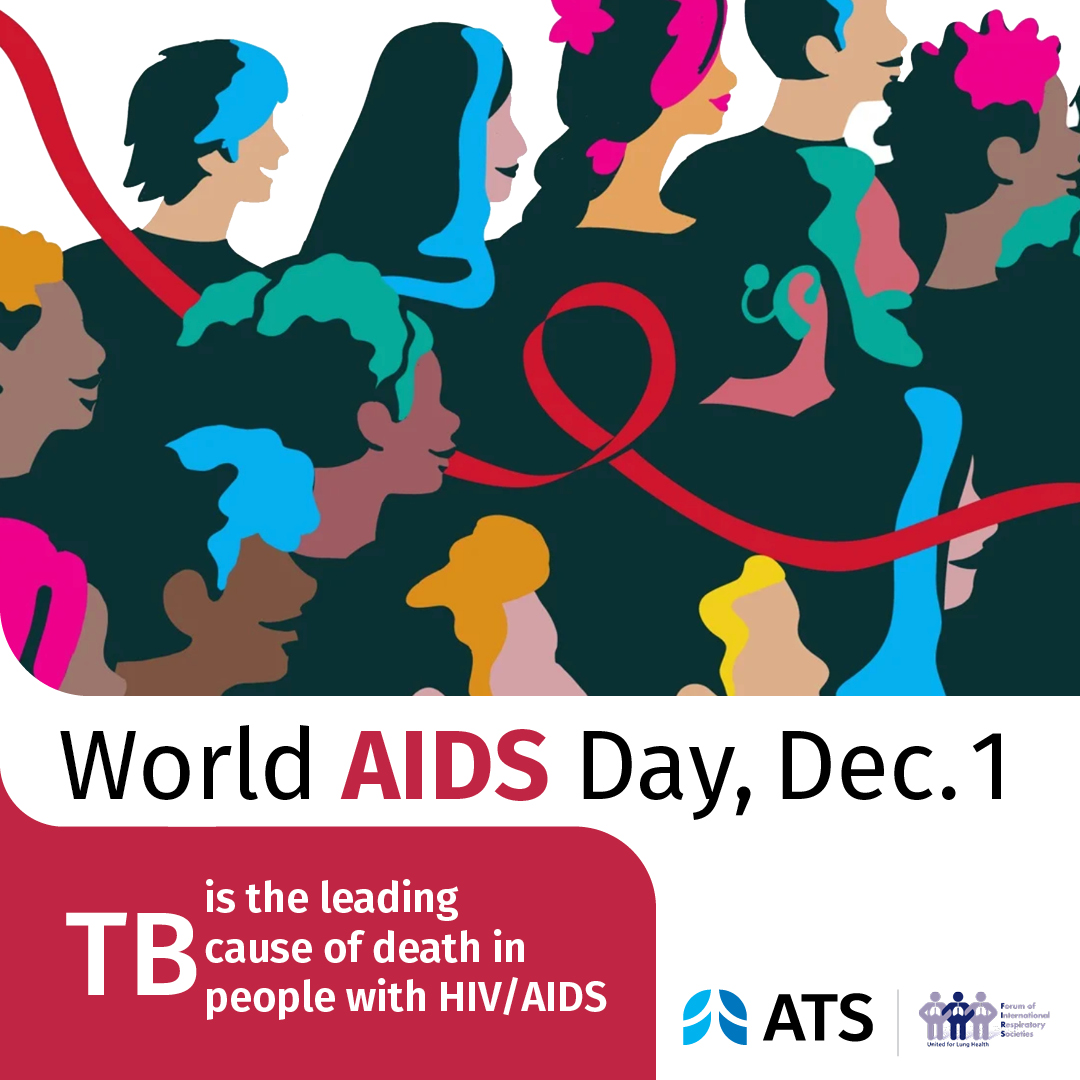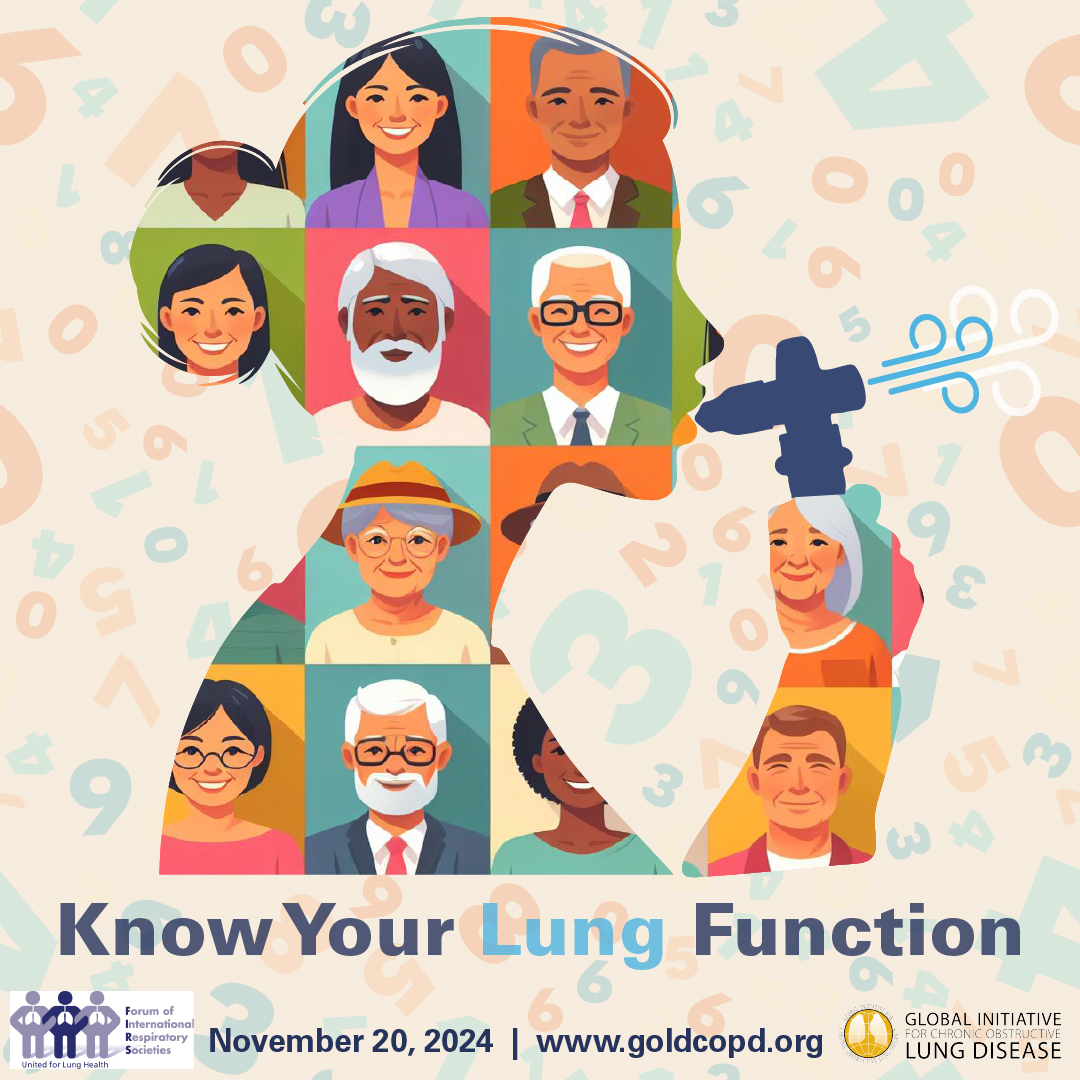In support of World Lung Cancer Day, the Forum of International Respiratory Societies (FIRS), calls for more awareness and understanding of lung cancer risk factors, as well as the importance of early screening and treatment.
Lung cancer is responsible for nearly 1 in 5 cancer deaths according to the World Health Organization. While lung cancer and breast cancer are diagnosed at the same rate (11.6 percent), lung cancer kills more people yearly than breast, colon and prostate cancers combined. Lung cancer mortality is projected to reach 2.45 million by 2030, a 39 percent increase in just over a decade.
While most understand that smoking is the single greatest risk factor for lung cancer at 80 percent of all cases, other lesser known risk factors include the environment and genetics. Environmental exposure to radon, asbestos, arsenic, beryllium and uranium has been linked to lung cancer. The risk of lung cancer also increases with a history of cancer in another part of the body, age, family history, radiation to the chest area and lung diseases like chronic obstructive pulmonary disease (COPD).
Access to screening options and education is vital for early detection and treatment. Low-income countries, where survival rates are significantly below the average, report only a 15 percent availability of treatment through public health systems. More that 90 percent of high-income countries report vital access to care.
Lung cancer symptoms include change in mucus, chest or back pain, coughing up blood and difficulty swallowing. Tests that may be used to diagnose lung cancer include chest x-rays, CT and PET scans, bronchoscopy and needle biopsies. If you are a current or former smoker and over the age of 55, you may be a candidate for a low-dose CT scan screening that can potentially detect lung cancer in its earliest stages.
Read the World Lung Cancer Day fact sheet here.





